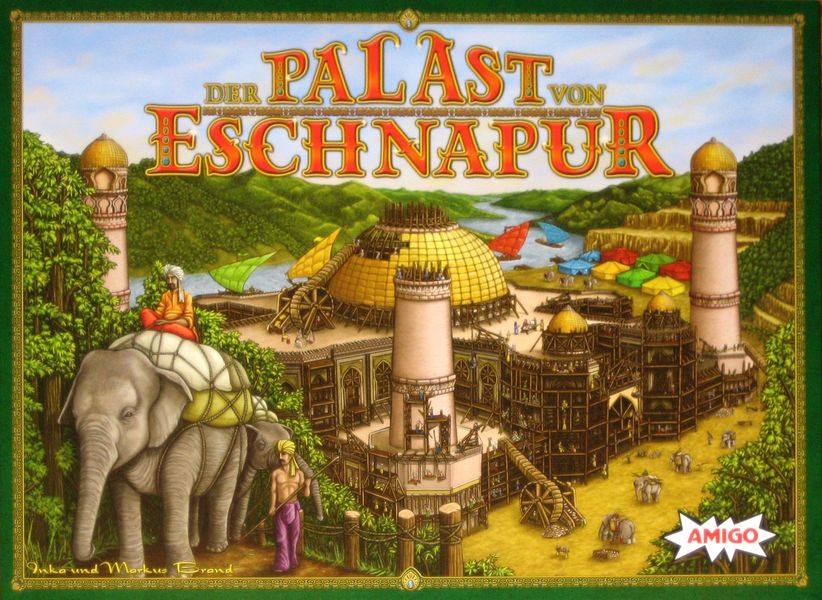Der Palast von Eschnapur (2009) Board Game
Der Palast von Eschnapur, released in 2009, is a board game designed by Dennis Lohausen and published by AMIGO. It is set in ancient times and incorporates elements of area majority/influence, auction/bidding, and variable player powers.
Game Components of Der Palast von Eschnapur
How To Setup Der Palast von Eschnapur
To set up the game, the palace board is assembled by placing the palace parts in a row. Depending on the number of players, some buildings may be removed. Each player receives a colored set of building cards corresponding to the palace parts, their start amount of gold, and their personal player board. The privilege cards are placed face up above the palace, and the progress board is set up below the palace.
Gameplay Mechanics and Game Objective
Player Experience
In **Der Palast von Eschnapur**, players engage in a dynamic game of strategic bidding and building. Each turn is structured into nine phases, where players secretly place their bids, determine player order, and construct parts of the palace. The game requires constant reassessment of strategy due to the limited gold resources and the unpredictability of other players’ moves. Guessing opponents’ strategies and timing bids correctly are crucial for success.
Pros
Cons
Personal Thoughts on Der Palast von Eschnapur
**Der Palast von Eschnapur** is ideal for players who enjoy strategic games with a strong social interaction component. It is particularly suited for those who appreciate games that require constant strategic adjustments and bidding mechanics. While it may be more enjoyable with two players due to the reduced chaos, it still offers a challenging and engaging experience for small to medium-sized groups. However, players who prefer simpler rules or long-term planning may find this game less appealing.
We are supported by our audience. When you purchase through links on our site, we may earn an affiliate commission, at no extra cost for you. Learn more.

